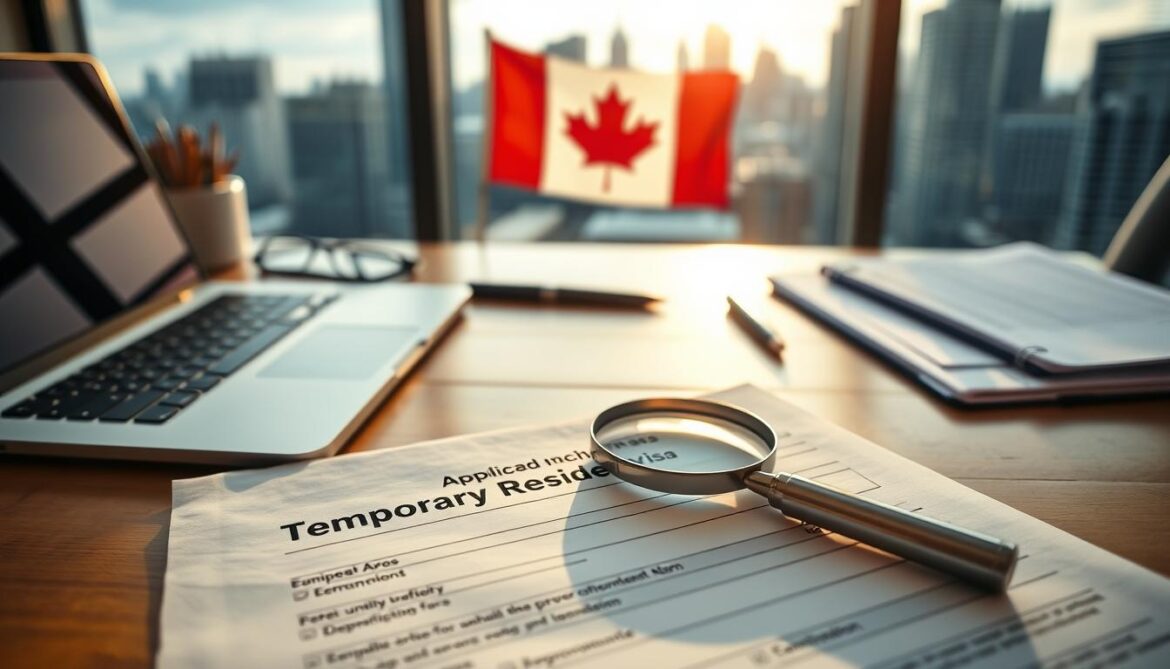Did you know over 30% of temporary residents in Canada risk travel delays by submitting their temporary resident visa (TRV) applications too late? Timing is critical when managing immigration documents, especially after securing your work permit. This guide simplifies the process of using the Canada Visa Portal to maintain your legal status and travel flexibility.
The government’s online platform streamlines submissions, reducing processing times compared to paper applications. Submitting your request at least three months before planned travel avoids last-minute complications. Immediate action after permit approval also ensures seamless transitions between residency phases.
A $100 fee applies to all TRV requests, with digital submissions typically processed faster. The portal provides real-time updates, document checklists, and secure payment options. Staying proactive with these tools minimizes stress and keeps your plans on track.
Key Takeaways
- The Canada Visa Portal is the fastest method to submit TRV requests after work permit approval.
- Apply three months before travel or immediately after extending your permit.
- A $100 fee applies, with online processing prioritized over paper submissions.
- Digital applications offer tracking features and reduced wait times.
- Proper timing prevents disruptions to international travel or residency status.
Introduction to the TRV Application Process
Navigating immigration requirements becomes simpler when you understand the tools at your disposal. The Canada Visa Portal transforms complex procedures into manageable steps, especially for those already holding valid status in the country.
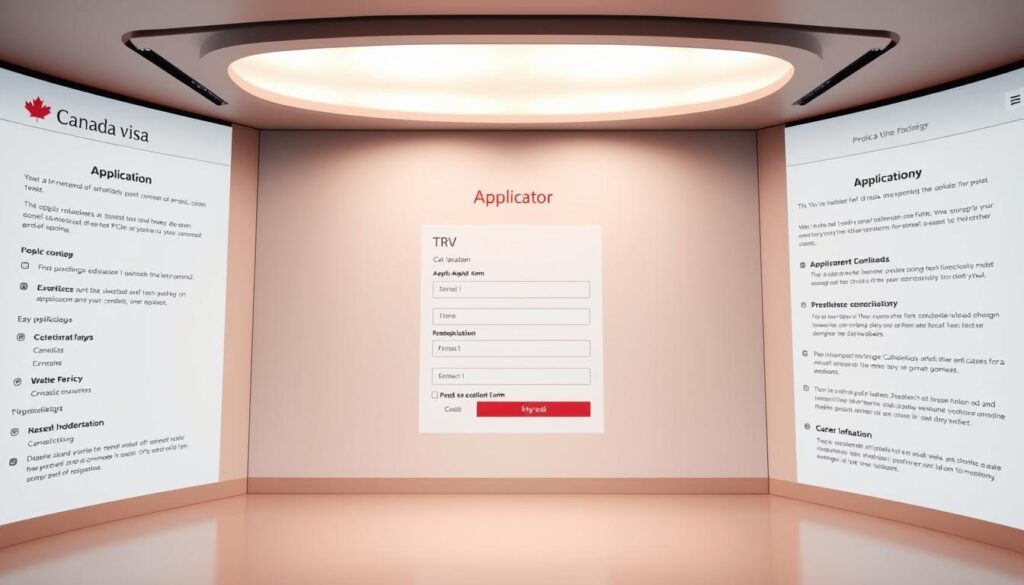
Setting the Stage for Your Application Journey
Your IRCC secure account acts as the backbone of your digital immigration experience. This personalized space stores your documents, tracks progress, and sends critical updates. Creating this account early ensures you’re ready to act when permit extensions or travel plans arise.
Overview of the Canada Visa Portal
The portal’s design focuses on efficiency. Features like encrypted file uploads and instant payment processing reduce errors and delays. Real-time tracking lets you monitor your submission’s status without calling immigration offices.
| Feature | Online Portal | Paper Submissions |
|---|---|---|
| Processing Time | 2-4 weeks | 6-8 weeks |
| Document Checklist | Interactive | Static PDF |
| Status Updates | Instant notifications | Mail/Email delays |
Applications submitted within Canada receive priority routing through the system. This optimization helps temporary residents maintain valid status while awaiting visa decisions. Always cross-reference the latest guidelines before finalizing your submission.
Understanding Temporary Resident Visas and Their Importance
Many temporary residents overlook a crucial detail in their Canadian immigration journey: the distinction between legal status and entry authorization. This gap in understanding often leads to unnecessary complications when traveling abroad.
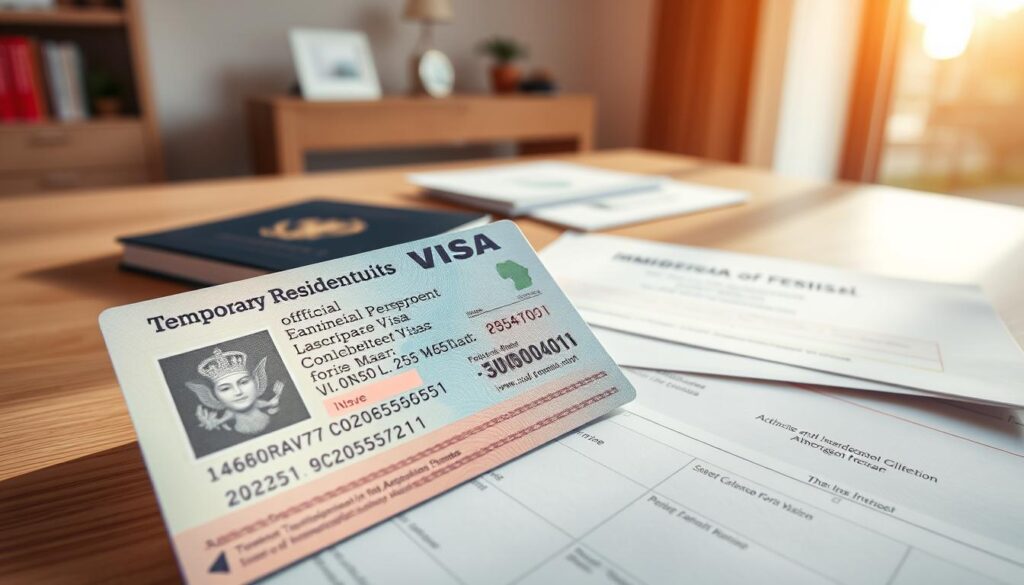
What Is a Temporary Resident Visa?
A temporary resident visa (TRV) acts as your gateway to Canada for approved temporary stays. Citizens from visa-required countries must obtain this document before arrival. While commonly called a “Visitor Visa,” its official name reflects its broader purpose across various travel scenarios.
The Canada Visa Portal simplifies TRV requests for those already in the country. Unlike initial applications made abroad, these submissions often process faster due to existing status verification.
Maintaining Compliance During Your Stay
Your work permit grants legal status, but the TRV controls border access. Expired entry authorization doesn’t affect your right to remain if your permit remains valid. However, leaving Canada without a current TRV risks denied re-entry – except when visiting the U.S. or St. Pierre and Miquelon.
Consider this scenario: Your visa expires next month, but your employment contract runs for six more months. You can continue working legally, yet international travel requires renewing your TRV first. The portal’s document checklist helps avoid such oversights.
Eligibility Criteria and Required Documentation
Your Canadian immigration journey hinges on precise documentation. The Canada Visa Portal streamlines this process, but missing items or incomplete submissions remain common pitfalls. Let’s break down what you need.
Document Checklist Essentials
Start with your valid work permit or study permit. This proves your authorized status. Capture every page of your passport containing visas, stamps, or markings. Immigration officers review travel patterns to confirm compliance history.
Your digital photo must meet biometric standards – neutral expression, plain background, no shadows. Professional photographers familiar with IRCC specifications reduce rejection risks.
Financial Support Breakdown
Proof of $10,000 CAD annually covers basic needs beyond tuition. Combine these options:
- Bank statements showing liquid funds
- Scholarship award letters
- Notarized sponsorship commitments
Self-funded applicants often use six months of bank records. Sponsors must provide recent income proofs alongside their support letters. Mix documentation types for stronger credibility.
Organize files using the portal’s category labels. Double-check formats – PDFs under 4MB work best. Authenticity matters: altered documents lead to five-year entry bans. Cross-verify every detail against your original papers before uploading.
how to apply for trv after getting work permit
Launching your temporary resident visa renewal starts with two critical tools: your IRCC secure account and the IMM5257 form. These elements work together to create a smooth digital submission process through the Canada Visa Portal.
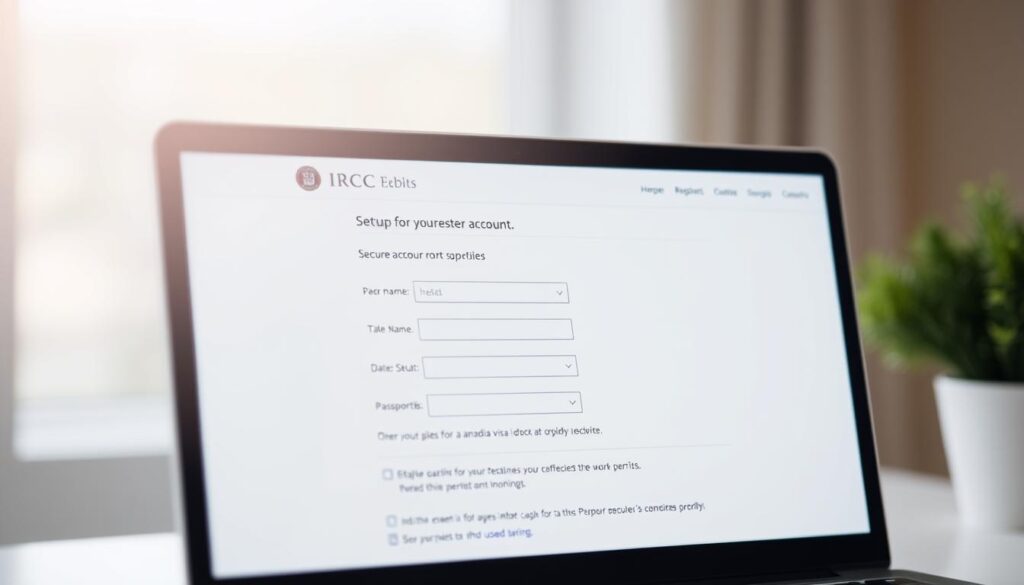
Preparing Your IRCC Secure Account and Necessary Forms
Log into your existing IRCC secure account before downloading any documents. First-time users must verify their identity through a secure two-step process. Ensure your profile displays current contact details to avoid missed updates.
Download the IMM5257 directly from your account dashboard. The portal automatically provides the latest version, preventing outdated submissions. Pro tip: Clear your browser cache to ensure form fields load correctly.
Step-by-Step Guide to Completing the IMM5257 Form
Section A requires your current immigration status. Enter your work permit number exactly as shown on your document. For question 3, select “Visitor Visa” regardless of your location in Canada.
Double-check dates in the travel history section. Mismatches between your passport stamps and declared entries raise red flags. Save progress every 10 minutes to prevent data loss.
Final validation triggers a barcode at the top of page 5. Missing this code means incomplete fields. Attach the form to your portal submission alongside recent passport scans and proof of employment.
Navigating the Canada Visa Portal
Efficient digital navigation separates smooth applications from frustrating delays. The portal’s design prioritizes clarity, but strategic use of its features maximizes success rates.

Accessing and Using the Online Application System
Begin by selecting “Visitor visa, study and/or work permit” from the main dashboard. This triggers a dynamic questionnaire that adapts to your situation. One user reported: “The system caught a missing document I hadn’t considered – saved me three weeks of processing delays.”
Critical choices include declaring Canada as your current residence. This routes your submission through domestic processing channels. The portal generates a personal reference code upon questionnaire completion – store this like a confirmation number.
Tips for Managing Your Application Process Effectively
Organize documents using the portal’s category labels before uploading. Supported formats include PDFs under 4MB and high-resolution JPEGs. Pro tip: Name files clearly (e.g., “Passport-BioPage-June2024”) to avoid confusion.
Use the save-and-exit feature when handling multiple pages. Partial applications remain accessible for 60 days. The error-check tool highlights incomplete fields with red borders – resolve these before final submission.
Frequent updates appear in your account’s message center. Enable notifications to track progress without constant logins. Proper navigation cuts average completion time by 40% compared to paper methods.
Practical Tips for a Successful TRV Application
Securing your travel authorization demands precision and attention to detail. One overlooked error can delay processing by weeks. Let’s explore strategies to streamline submissions through the Canada Visa Portal.
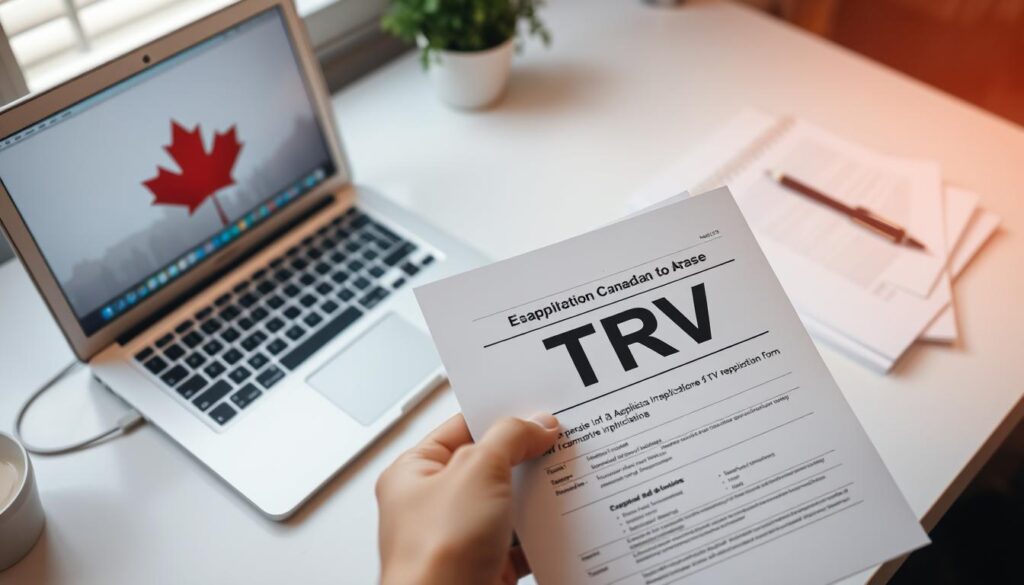
Avoiding Common Mistakes in Your Application
Double-check every form field against your work permit details. Inconsistent employment dates or passport numbers trigger review delays. Students often stumble by submitting unofficial transcripts – always use institution-sealed copies.
Letters of explanation clarify unique situations. A recent applicant noted: “Explaining my passport renewal timeline prevented a 30-day processing hold.” Keep these letters concise, addressing only the required points.
Safe Mailing Practices and Using Xpresspost
Purchase two identical 24×32 cm Xpresspost-National envelopes at Canada Post. Place one inside the other – IRCC uses the inner one to return your passport. Track both shipments using the provided numbers.
Regular mail risks document loss with no recourse. Xpresspost offers insurance coverage up to $100, providing peace of mind. Students mailing study permits should include a return address label in both envelopes.
Final tip: Photocopy your passport’s bio page before sealing the envelope. This backup helps if shipping issues arise. Following these steps ensures your visitor visa request stays on track.
Conclusion
Proper preparation transforms complex immigration processes into manageable tasks. The Canada Visa Portal remains your central hub for maintaining valid status while pursuing opportunities in the country. Through this platform, you access real-time updates, secure document uploads, and priority processing routes.
Submitting requests through your IRCC secure account ensures alignment with procedures designed for temporary residents. Those combining study and work commitments benefit most from early submissions – ideally three months before international travel. The $100 fee becomes a worthwhile investment for uninterrupted mobility.
Remember: Your visitor visa remains separate from employment authorization. Leaving Canada without valid re-entry documentation risks delays, even with an active work permit. Digital tools simplify compliance, but timely action determines success.
Leverage these insights to navigate residency requirements confidently. Whether extending stays or planning brief exits, strategic use of official resources keeps your journey on track.


